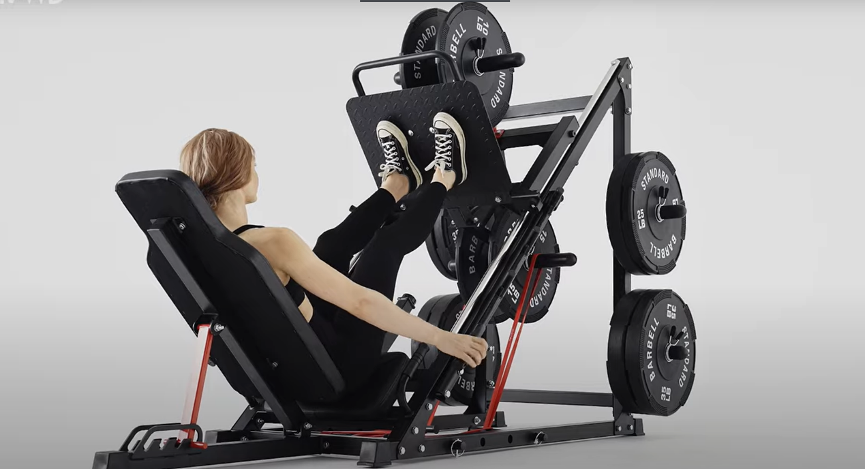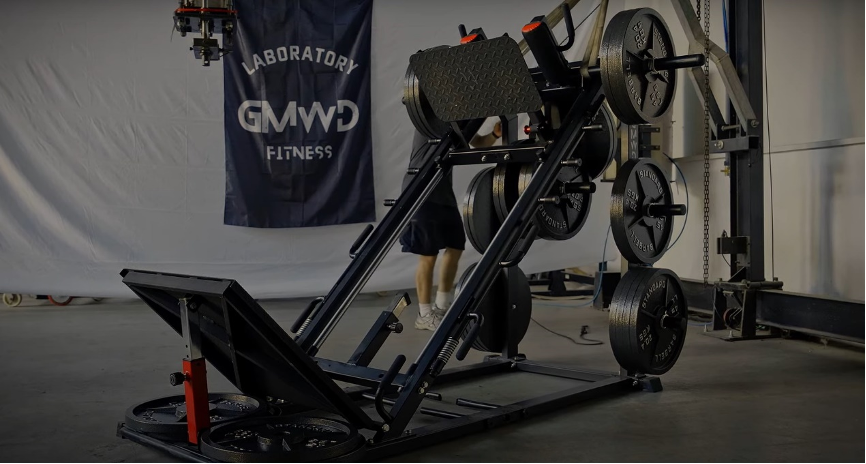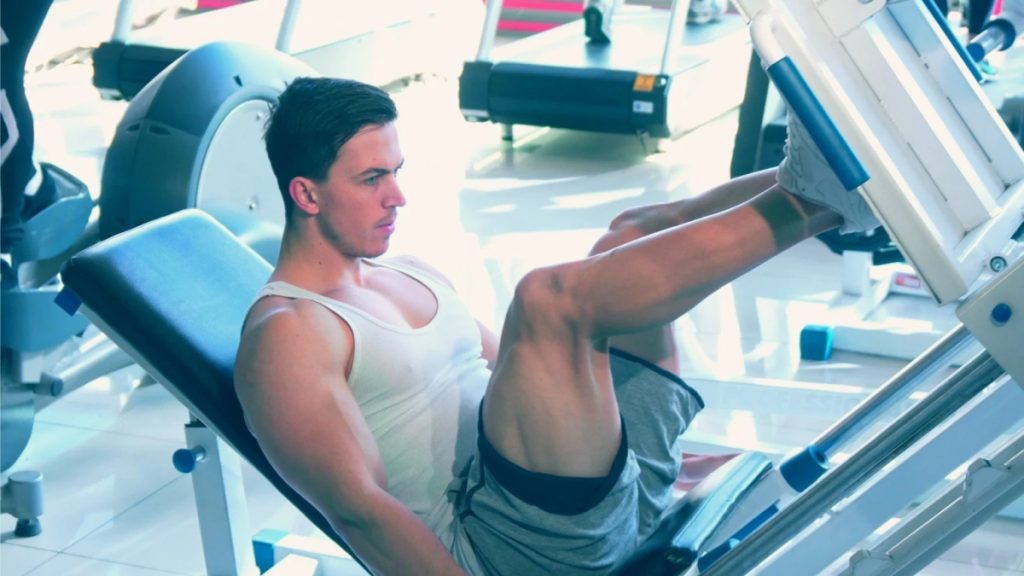Whether you’re a seasoned gym enthusiast or just beginning your fitness journey, incorporating the right equipment into your workout routine can significantly enhance your results. One such essential piece of equipment is the leg press machine. This comprehensive guide delves into everything you need to know about the leg press machine, including its benefits, proper usage, variations, and how it compares to other leg exercises. Let’s explore how the gmwd fitness leg press machine can be a game-changer in your fitness regimen.
What is a Leg Press Machine?
The leg press machine is a staple in strength training, specifically designed to target the lower body muscles such as the quadriceps, hamstrings, glutes, and calves. Unlike free-weight exercises like squats, the leg press offers a controlled environment where you can push significant weight with greater stability. This controlled setting reduces the risk of injury and allows for focused muscle engagement, making it an excellent choice for both beginners and advanced lifters.
There are several types of leg press machines available. The horizontal leg press positions the seat parallel to the ground, which is generally easier on the lower back but may offer a limited range of motion. The 45-degree leg press is the most common type found in gyms, with the seat angled at 45 degrees, providing a balanced combination of range of motion and comfort. Lastly, the vertical leg press has the seat positioned vertically, offering a unique angle that targets the muscles differently and is often preferred by advanced users seeking varied workout angles.

Benefits of Using a Leg Press Machine
Incorporating the leg press machine into your workout routine brings numerous benefits. Firstly, it effectively builds lower body strength by targeting major muscle groups in the legs, including the quadriceps, hamstrings, glutes, and calves. This leads to significant muscle growth and enhanced strength. Additionally, using the leg press machine improves joint stability by strengthening the muscles surrounding the knee and hip joints, which enhances overall joint stability and reduces the risk of injuries.
Another advantage is the enhanced muscle isolation the leg press offers. Unlike compound movements like squats, which engage multiple muscle groups and require significant balance and coordination, the leg press allows for better isolation of the lower body muscles. This makes it easier to focus on specific muscle groups and achieve targeted muscle development. Furthermore, the leg press machine is safe for beginners as it provides guided movement and support for the back, allowing newcomers to build confidence and strength before progressing to more complex exercises. Lastly, the versatility of the leg press machine is noteworthy. With various adjustments and angles available, it enables a wide range of exercises and variations, keeping your workouts diverse and effective.
How to Use a Leg Press Machine Properly
Proper usage of the leg press machine is crucial to maximize its benefits and prevent injuries. Begin by adjusting the machine to fit your body. Sit on the machine with your back and head firmly against the padded support, ensuring that when your feet are placed on the platform, your knees are at a 90-degree angle. Your feet should be shoulder-width apart, though you can adjust the position slightly depending on the specific muscles you aim to target.
Setting the appropriate weight is the next step. Start with a manageable weight to warm up and gradually increase the weight as you become more comfortable with the movement. To perform the exercise, inhale as you slowly bend your knees, lowering the platform toward you. Then, exhale as you push the platform away by extending your legs. It’s important to keep your back pressed against the pad and avoid locking your knees at full extension. Ensure that the movement is controlled, avoiding any jerky or rapid motions. Aim to complete 3-4 sets of 8-12 repetitions, adjusting based on your fitness goals.
Maintaining proper form is essential. Always keep your back and hips pressed against the seat to prevent strain, ensure your knees track in line with your toes to avoid undue stress on the joints, and use a full range of motion by lowering the platform until your knees are at a 90-degree angle before fully extending without locking your knees.

Leg Press Machine Workouts and Variations
Adding variety to your leg press workouts can help prevent plateaus and keep your training engaging. The standard leg press focuses on overall lower body strength with feet shoulder-width apart. A narrow stance leg press, where your feet are placed closer together on the platform, emphasizes the inner quadriceps and adductors. Conversely, a wide stance leg press positions your feet wider than shoulder-width apart, targeting the outer quadriceps and glutes more intensely.
For those looking to enhance muscle balance and unilateral strength, the single-leg press is an excellent variation, allowing you to work one leg at a time. Additionally, calf raises on the leg press involve keeping your toes on the platform and performing calf raises by pushing through the balls of your feet after your regular leg press sets.
A sample leg press workout might begin with a 5-10 minute warm-up of light cardio, such as jogging or cycling. The workout could then include four sets of standard leg presses with ten repetitions each, followed by three sets of narrow stance leg presses with twelve repetitions, three sets of single-leg presses with ten repetitions per leg, and three sets of calf raises on the leg press with fifteen repetitions. Concluding with stretching exercises focused on the lower body helps in cool-down and muscle recovery.
Common Mistakes to Avoid
To ensure safety and effectiveness while using the leg press machine, it’s important to avoid common mistakes. One major mistake is using too much weight, which can compromise your form and increase the risk of injury. It’s crucial to start with lighter weights and gradually increase them as your strength improves. Another mistake is performing an incomplete range of motion, which reduces muscle engagement. Ensure you fully extend and lower the platform to maximize benefits.
Allowing your knees to cave inward during the movement places undue stress on the joints. Maintain proper alignment by keeping your knees in line with your toes throughout the exercise. Locking your knees at the top of the movement can strain the ligaments, so stop just short of full extension. Additionally, arching your back by lifting it off the seat can lead to back injuries. Always keep your back firmly against the pad to maintain proper form and prevent strain.
Leg Press Machine vs. Other Leg Exercises
Understanding how the leg press machine compares to other leg exercises can help you integrate it effectively into your workout regimen. When comparing the leg press to squats, the leg press provides better back support, allowing you to lift heavier weights safely and is ideal for isolating leg muscles. However, squats engage multiple muscle groups, including the core and lower back, promoting overall functional strength, although they require proper technique to avoid injury and may be more challenging for beginners.
In comparison to lunges, the leg press allows for higher weight loads, effectively targeting the quadriceps and glutes. However, lunges improve balance, coordination, and unilateral leg strength, though they typically use lighter weights and can be more strenuous on the knees. When compared to deadlifts, the leg press focuses primarily on the lower body with controlled movement, while deadlifts target the entire posterior chain, including the hamstrings, glutes, lower back, and traps. Deadlifts offer comprehensive muscle engagement but carry a higher risk of injury if performed incorrectly and require good technique.
Choosing the Right Leg Press Machine for Your Gym or Home
Selecting the appropriate leg press machine depends on several factors, including available space, budget, and specific fitness goals. The horizontal leg press generally requires less space and is often more affordable, making it ideal for beginners and those with limited space. The 45-degree leg press, which requires moderate space and falls in the mid-range pricing, is suitable for most gyms and intermediate users. The vertical leg press, needing more vertical space and typically more expensive, is best suited for advanced users seeking varied angles in their workouts.
When choosing a leg press machine, consider key features such as adjustability, which allows you to modify the seat position, backrest, and foot platform to accommodate different body types and exercises. Ensure the machine can handle the maximum weight you intend to lift by checking its weight capacity. Build quality is another critical factor; look for durable materials and a stable frame to ensure safety and longevity. Comfort is also important, so padded seats and handles can enhance your workout experience. Additionally, an intuitive design with clear instructions for adjustments and movements will make the machine easier to use.
Top brands to consider when selecting a leg press machine include Hammer Strength, Rogue Fitness, Body-Solid, Cybex, and Nautilus. These brands are known for their quality, durability, and performance, ensuring that you invest in a reliable piece of equipment for your gym or home workout space.
Frequently Asked Questions (FAQs)
Is the leg press machine safe for beginners?
Yes, the leg press machine is generally safe for beginners as it provides support and guided movement. However, it’s essential to start with lighter weights and focus on proper form to prevent injury.
Can the leg press help with weight loss?
While the leg press primarily builds muscle strength, increasing muscle mass can boost your metabolism, aiding in weight loss when combined with a balanced diet and cardio exercises.
How often should I include leg press in my workout routine?
Incorporating the leg press 1-2 times per week, as part of a balanced lower body workout, is effective. It’s important to allow at least 48 hours of rest between sessions targeting the same muscle groups.
What muscles does the leg press target the most?
The leg press primarily targets the quadriceps, hamstrings, glutes, and calves. Depending on foot placement, it can also engage the inner thighs and adductors.
Can I do the leg press with a knee injury?
If you have a knee injury, it’s crucial to consult a healthcare professional before using the leg press machine. Proper form and moderate weight are essential to prevent exacerbating the injury.
Conclusion
The leg press machine stands out as a versatile and effective tool for building lower body strength, enhancing muscle growth, and improving joint stability. Whether your goal is to increase your squat weights, balance your leg training, or safely target specific muscle groups, the leg press offers a controlled environment to achieve your fitness objectives. Prioritizing proper form, starting with manageable weights, and incorporating a variety of exercises will help you maximize your results. By equipping your gym or home workout space with a reliable leg press machine, you take a significant step towards developing stronger, more powerful legs.
